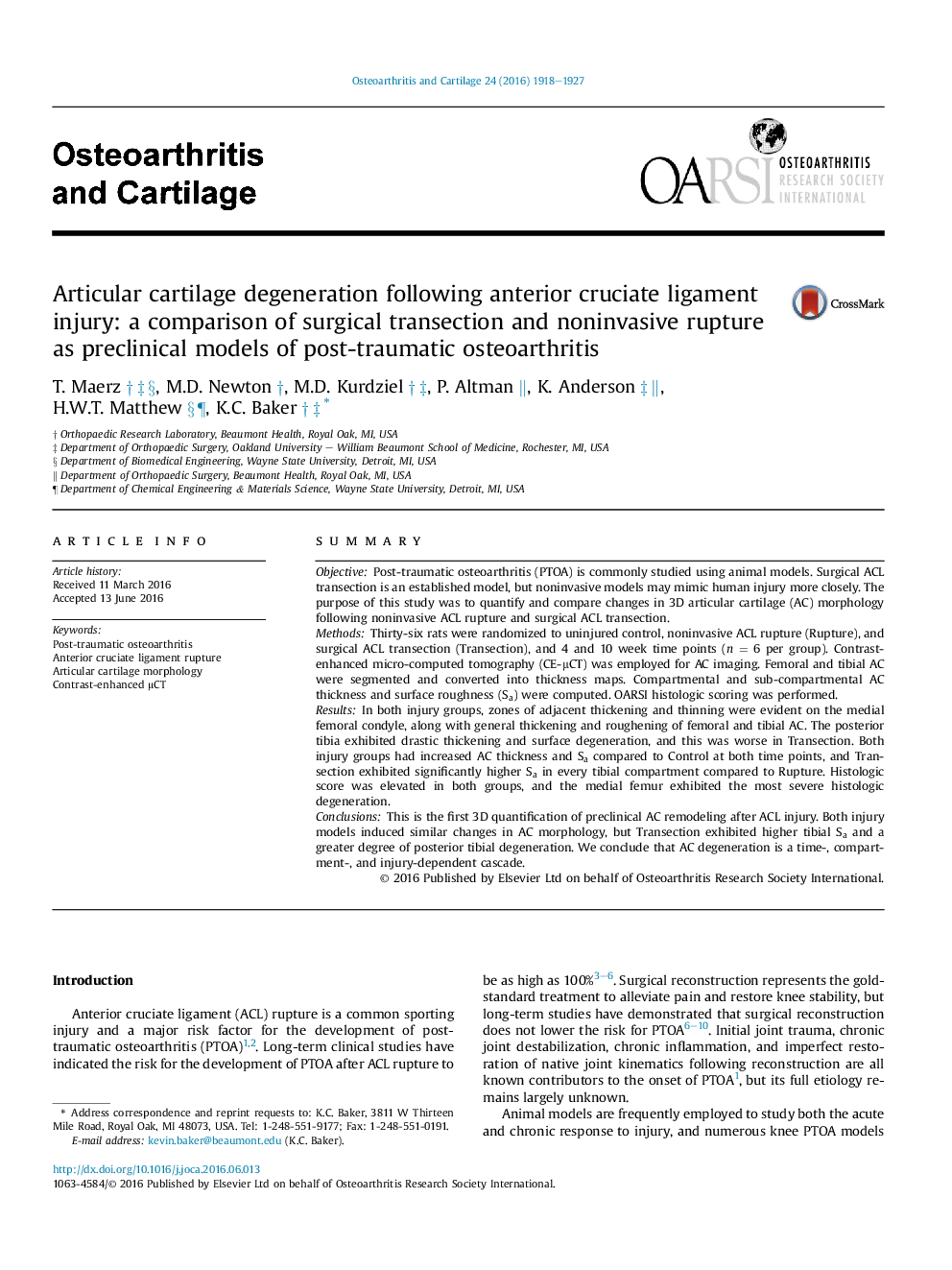| Article ID | Journal | Published Year | Pages | File Type |
|---|---|---|---|---|
| 5669356 | Osteoarthritis and Cartilage | 2016 | 10 Pages |
SummaryObjectivePost-traumatic osteoarthritis (PTOA) is commonly studied using animal models. Surgical ACL transection is an established model, but noninvasive models may mimic human injury more closely. The purpose of this study was to quantify and compare changes in 3D articular cartilage (AC) morphology following noninvasive ACL rupture and surgical ACL transection.MethodsThirty-six rats were randomized to uninjured control, noninvasive ACL rupture (Rupture), and surgical ACL transection (Transection), and 4 and 10 week time points (n = 6 per group). Contrast-enhanced micro-computed tomography (CE-μCT) was employed for AC imaging. Femoral and tibial AC were segmented and converted into thickness maps. Compartmental and sub-compartmental AC thickness and surface roughness (Sa) were computed. OARSI histologic scoring was performed.ResultsIn both injury groups, zones of adjacent thickening and thinning were evident on the medial femoral condyle, along with general thickening and roughening of femoral and tibial AC. The posterior tibia exhibited drastic thickening and surface degeneration, and this was worse in Transection. Both injury groups had increased AC thickness and Sa compared to Control at both time points, and Transection exhibited significantly higher Sa in every tibial compartment compared to Rupture. Histologic score was elevated in both groups, and the medial femur exhibited the most severe histologic degeneration.ConclusionsThis is the first 3D quantification of preclinical AC remodeling after ACL injury. Both injury models induced similar changes in AC morphology, but Transection exhibited higher tibial Sa and a greater degree of posterior tibial degeneration. We conclude that AC degeneration is a time-, compartment-, and injury-dependent cascade.
